Looking Down the Digital Engineering Road
As new digital technologies mature, the technical outlook for engineering design is robust, exciting and with much to offer the world around us.
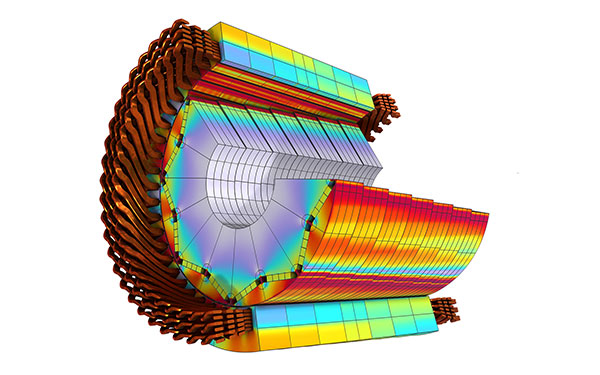
“Conventional research and development tend to be incremental. In contrast, generative design, alongside topology optimization, can be used to come up with new and creative designs that are more efficient.” —Bjorn Sjodin, COMSOL. Image courtesy of COMSOL.
Latest News
December 19, 2023
As we approach another new year, the technical outlook from the perspective of engineering design has never been so exciting. New concepts, tools, approaches and methodologies are gaining momentum.
The value of new tools such as simulation, modeling, artificial intelligence (AI) and generative design are embraced by designers and design tool vendors. They enable engineers and designers to do great things, overcoming hurdles that were irresolvable in the past.
The technical outlook for engineering design is good. The times they are a’changin’ for sure. With that comes many exciting, fruitful technologies and approaches that engineering design tools are incorporating and putting to use.
Generative Design—a Game Changer?
Mike Haley is the senior vice president of Autodesk Research in San Francisco, CA. He points out that Autodesk pioneered the development of generative design when the company co-authored the first research paper on the topic in 2009.
“Since its introduction, we have been delighted to see this optimization algorithm-driven approach to design exploration and optioning explored by companies like the Mercedes F1 design team, Volkswagen, Hyundai and General Motors to create critical car parts,” says Haley.
“NASA uses our Generative Design to critically increase strength, while reducing the weight of parts for spacecraft,” Haley adds. “On the architecture, engineering and construction side of things, we’ve seen Airbus employ generative design to optimize the floor plan of its factories. And we’re seeing film and entertainment companies like Laika Studios use Generative Design tools to optimize production schedules.”
Haley feels that generative design technology requires a dedicated technician who fully understands the detailed requirements for the designs and features that may be produced through optimization.
“It takes time for these design professionals to set up the goals and constraints the generative design needs in order to offer viable designs, and that can be an obstacle to adoption for many,” says Haley. “For this reason, the percentage of professionals using these tools remains relatively small when compared to the broader industry.”
Generative design is changing the way designers can approach new problems in their day-to-day work, says Colin Swearingen, modeling and simulation industry process consultant at Dassault Systèmes.
“Whether it’s refining and improving an existing design, or coming up with a new design from scratch, users are able to create optimal designs in a fraction of the time,” says Swearingen. “I’ve seen scenarios where the optimized model took less time to design than even the legacy part, which just goes to show how effective adopting this technology can be.
“In terms of acceptance, we are seeing more and more adopters, especially considering how streamlined a process looks, compared to the way things have been done in the past,” Swearingen adds. “Companies are easily able to realize the benefits of this type of technology and enjoy the luxury of creating more iterations than ever before—with a level of efficiency far beyond traditional workflows.”
Emergence of AI and Machine Learning
Month by month, year by year, AI continues to take center stage in many, if not most, industries. Engineering design is no exception. The influence of AI and machine learning on design practices is significant.
The advantages that AI can bring to design and manufacturing depend on the application, says Ken Welch, chief engineer of design at Altair. However, advantages tend to fall into two buckets.
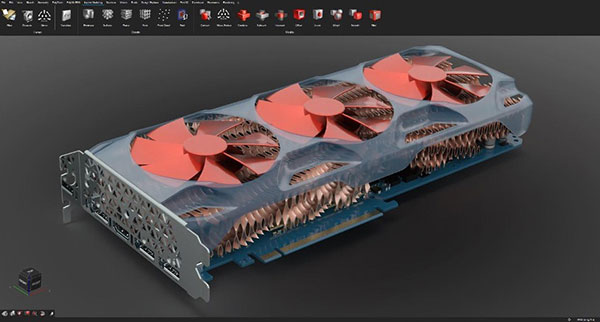
Techniques such as generative design allow for design alternatives to be generated to do trade-off studies. Image courtesy of Altair.
“Better designs, faster: Techniques such as generative design allow for design alternatives to be generated to do trade-off studies,” says Welch. “For example, techniques included in Altair’s physicsAI speeds up the design exploration process by delivering fast physics predictions based upon historical simulation data.”
Secondly, Welch says that techniques such as clustering and classification allow users to embed subjective design criteria in the optimization process.
“An important use case for AI in manufacturing has been finding optimal designs to meet requirements for a variety of manufacturing processes,” says Welch. “Is the additional cost for [application lifecycle management (ALM)] worth the decrease in weight of a part? Is cost savings with casting worth producing a heavier part? Generative design can help answer these questions. Using generative design for each manufacturing process, engineers can perform what-if studies to compare cost versus weight for their applications.”
Bob Haubrock is the vice president for product engineering software for Siemens Digital Industries Software. He is bullish on AI and says the use of AI and generative design means that the user must stay in control.
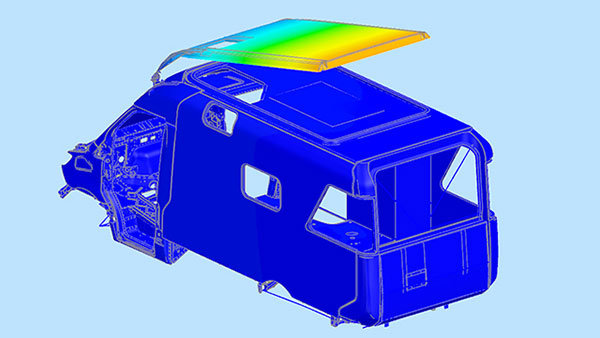
“We see great potential for the use of AI,” says Haubrock. “We first introduced AI in the area of user interaction with command prediction capabilities. NX started along a path of learning and understanding user patterns to be able to predict and offer back the most commonly used next commands in a workflow. We extended that into areas such as ‘find similar,’ which allows users to quickly find geometric patterns in a design, making selection of objects much faster. We also implemented voice assistant, which allows users to use natural language to drive NX. All are focused on user productivity.”
Haubrock adds that Siemens sees opportunity in offering digital co-pilots.
“AI tools that learn and help suggest things like best draft angle on a cast or molded part [can be used as] suggestions for parameter changes to improve a design’s quality,” Haubrock says. “In our recent addition of NX Molded Part Designer we included capabilities to dynamically analyze and report back a part’s suitability for injection molding, identifying things like undercuts, or areas where the aspect ratio of the part may give issues with things like plastic deformation. In the future, AI will allow us to go further and not just identify issues but help users by suggesting modifications.”
Given the potential, there will be a race to integrate and apply the benefits of AI and machine learning into engineering tools and processes, but a critical aspect to the success of its adoption and acceptance is trust and confidence in the predictions it makes, says Mark Hindsbo, general manager and vice president of Ansys.
“When these tools provide correct answers, it is very impressive,” Hindsbo says. “When they are wrong, it can be very difficult to detect as they sound and appear authoritative and plausible. It is imperative for those developing and integrating these technologies to not stop at prediction, but to also build feedback and confidence metrics into the tools as well as integrate them into existing design processes, so that end users can validate prediction.”
New Tools Enhance Engineering Design
Bartosz Korec is the lead industrial designer for BlackHägen Design. Korec emphasizes the important role that simulation continues to play in the creation of better designs.
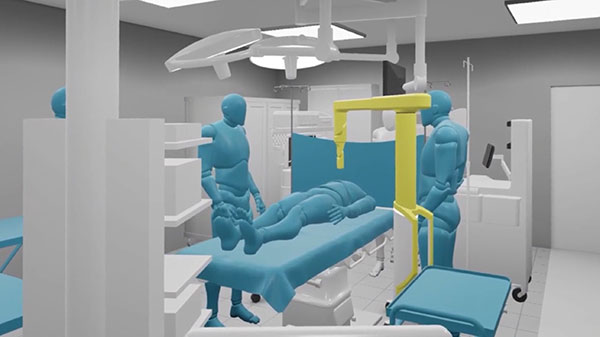
“Early in the design process, concept assessments utilizing virtual environments have been gaining ground in popularity due to their inherent strength of fast and cost-effective deployment in various environments,” says Korec. “Recent developments in self-contained [virtual reality (VR)] headsets with inside-out tracking capabilities (like the Meta Quest 2 and 3) offer particularly convenient deployment by being easy to ship and [to] transport between locations with minimal cost and set-up requirements.
“As with any other tool, a thorough understanding of its strengths and limitations is required to deploy VR study environments in an effective manner that will obtain useful insights,” Korec says. “For instance, a simulated VR environment is an excellent tool for evaluating sight lines and space requirements. It can also provide the observer with a ‘hands-on’ experience, which communicates the challenges for users at the extremes of the ergonomic spectrum.”
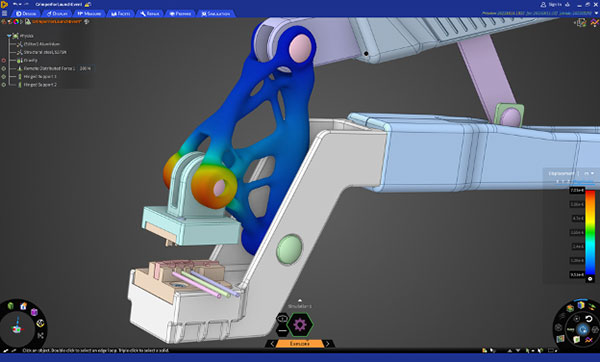
Ansys’ Hindsbo says they are seeing more and more of their customers “shift left” to empower all their engineers to gain insights from simulation early in the product design process. From an overall market perspective, he says they are moving from early pioneering to mainstream adoption, where shifting left is becoming a strategic imperative at the very senior leadership level, including the board.
“There is no silver bullet, but several patterns are emerging for shifting left,” says Hindsbo. “Firstly, the ease of use and speed of doing simulation has been dramatically increased over the last years with tools such as Ansys Discovery and Creo Simulation Live. We regularly see engineers with little or no simulation background pick up Ansys Discovery with minimal training and then perform quite sophisticated analysis in hours.
“Especially the new generation of digitally native engineers expect to work this way and be empowered to do their own analysis,” Hindsbo says. “Tools such as Ansys Discovery and PTC Creo Simulation Live do not transform a ‘non-engineer’ into an engineer, but they make good engineers great and more productive.”
The Path Forward
It seems that the present shadow of technological progress in engineering design has never experienced the confluence of so many new and disruptive technologies as there are at present. Generative design is making notable strides and is, indeed, changing so many facets of outcomes of engineering design. AI and machine learning also seem to be taking over, just as many are concerned about the perils and [hazards] of too much AI, too soon. Then there’s simulation and modeling and the VR technology that enable designers and engineers to create like never before.
We are living in an “incredibly exciting time” for technology applied to designing and making, says Autodesk’s Haley.
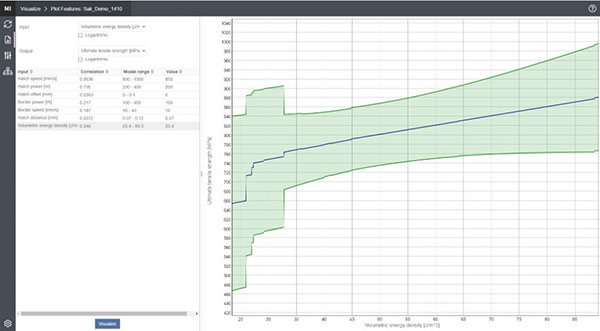
“As a researcher in AI, I always believed that we would have access to these sorts of powerful tools,” says Haley. “However, they are becoming a reality a lot faster than we all imagined. While every new technology comes with risks and issues to be overcome, I truly believe that generative AI and affiliated technologies like rapid simulation and generative design are going to fundamentally transform how we design and create the world around us.”
More Altair Coverage
More Dassault Systemes Coverage

Subscribe to our FREE magazine, FREE email newsletters or both!
Latest News
About the Author
Jim Romeo is a freelance writer based in Chesapeake, VA. Send e-mail about this article to DE-Editors@digitaleng.news.
Follow DE






